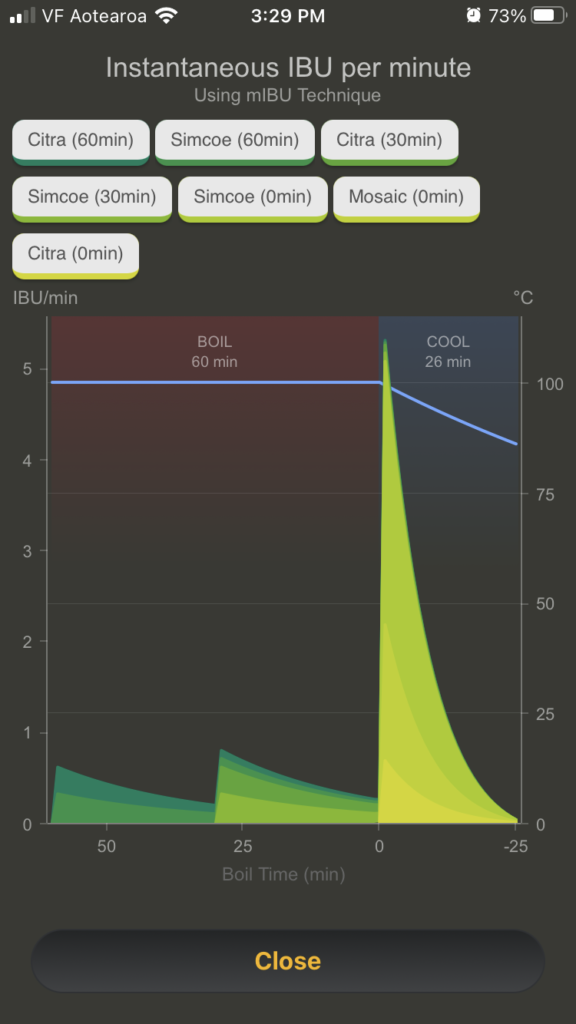What is IBU in beer?
International Bitterness (or “Bittering”) Unit or IBU was introduced in the 1950s and 1960s to put a number on the perception of a beer’s bitterness. International Bitterness Units have evolved since the 20th century, with newer methods offering more accurate calculations.
In this article, we look at Maximum International Bitterness Units or mIBU, a new, more accurate way to calculate IBU contribution based on the beers we brew today.
First, let's look at the definition of an IBU
International Bitterness Units are a chemical measurement of the number of bittering compounds (like isomerised and oxidised alpha acids, polyphenols and a few other bittering chemicals) that make a beer taste “bitter”.
Today’s brewers use the IBU scale in recipe creation and to help maintain bitterness levels in regularly brewed beers.
Almost all beers have an IBU rating between 5 (very low) and 120 (very high). It is important to note, however, that the IBU scale does not entirely reflect the quality or overall perception of bitterness.
IBU calculations
The most commonly used IBU calculation is the Tinseth equation developed by Glen Tinseth in 1997. This equation uses the wort volume, hop amount and hop alpha acid %, and boil time to determine the total IBUs in a finished beer.
Tinseth, Rager, Garetz, Mosher, Noonan and Daniels all have different equations to calculate IBUs with the key differences being how each of them approaches Hop Utilisation.
Introducing mIBU
These days, the IBU scale is no longer a true representative of the bitterness in modern-day beers. This is because hops used in the 20th century were often already oxidised due to the poorer processing, packaging and storage methods.
Our recommended way of calculating IBUs is using the mIBU calculation that was developed by Paul-John Hosom in 2015. Maximum IBU (or mIBU) is a modification of the Tinseth IBU formula and includes many optimisations that are better suited for the beers we brew today.
mIBU measures post-boil bitterness contributions by taking into account any additional equipment and process parameters; like kettle diameter, cooling method, hopstand process and hop temperature. This results in a more accurate prediction of IBU contribution over time.
How is mIBU calculated?
mIBU figures out your wort temperature and volume at the different stages of your brew, like the boil, hopstand and during cooling. The algorithm then runs through the whole time duration in small increments and calculates the instantaneous IBU contribution for each time constant based on the wort temperature and volume.
It then adds up all the results to find the total IBU contribution for each hop addition.
What makes mIBU more accurate?

- It takes into account:
– Carry-over bitterness contribution from boil additions in the hopstand,
– bitterness contribution from both boil and hopstand hops during the cooling stage,
– It takes into account change in volume due to evaporation during the boil. - Has an option to apply alpha-acid solubility limit:
– This limits the total IBUs when a large amount of hops is added. - Has the option to apply advanced pellet handling:
– An improvement over the standard approach of applying a multiplying factor. - Provides a graph to visualize bitterness contributions over time for all your hop additions.
Does this chart get you just as excited as it does us? Check out our latest video where Marko, our Grainfather software development whizz, demonstrates how to use and make the most of mIBU on the Grainfather App.
As you can see, mIBU is a great way to calculate IBU in beer!
Download our free Grainfather App on the App Store or Google Play, or sign up to our online platform to take advantage of this exciting new feature.
